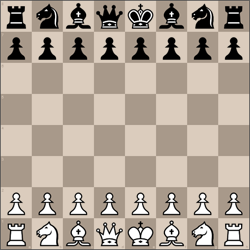 Chess 24 Jul 1960, Sun The Boston Globe (Boston, Massachusetts) Newspapers.com
Chess 24 Jul 1960, Sun The Boston Globe (Boston, Massachusetts) Newspapers.com
Chess Notebook
By LYMAN BURGESS
Geoffrey Goldstein, Everett, won the 1960 tournament of the Cambridge Y.M.C.A. Goldstein's 7-1 score (six wins and two draws) put him half a point above George Proll, Cambridge. David Scheffer, Cambridge, scored 5-3 which was good for third place just above David Ames, Quincy.
Wesley Drew, Somerville, director of the tournament, writes: “The thing I am most pleased about is the fact that not one forfeit was recorded. … Perhaps the success of this tournament, that ran for nine weeks, proves that players will take seriously a tournament that runs more than a weekend.” Mr. Drew is so heartened by this success that he is planning a Summer tournament next year.
Richard Vincent, Cambridge, won the Class B (an 8-round Swiss) 8-0. Second place went to Prof. J. A. Coolidge (5½-2½), and George Vazakas (5-3) was third.
Mikhail Tal, world chess champion, says of Robert Fischer: “A very gifted player. Nobody else at the age of 16 has knocked on the door of the world championship. Perhaps he doesn't play as well as he thinks he does, but there is no question he will go far. . . .But Bobby should read a lot more literature and not only about chess. Right now he is the most glamorous figure in chess, because of his extreme youth, but if he doesn't watch out he will, with time, stop being a prodigy and become just an ordinary genius.”
In the second issue of O. A Lester's “The Annotator” the feature game is a correspondence effort of Bart Gould's. It is a Morra gambit, an off-shoot of the Sicilian and a sort of left-handed semi-Danish. Of the Morro Lester says: “…a line in which White gives up a pawn to get some open lines, a superior position in the center and a worried look on his opponent's face. Generally speaking, there are three methods of combating such an opening. One way and this is the plan that Black adopts is to take the material and try to keep it, hoping that the pressure White will get can be minimized by careful defensive play. Usually this is a very difficult procedure. Another way is to refuse the material and go on with one's own plans instead. This is a good method and much safer for Black. Still a third method is to take the material and then proceed to give it right back in order to make freeing moves. This, too, is a very satisfactory way to handle gambits.
#294. Sicilian Defense
Bartlett Gould (white) vs. H. Carr (black)
Sicilian Defense: Smith-Morra Gambit Accepted























